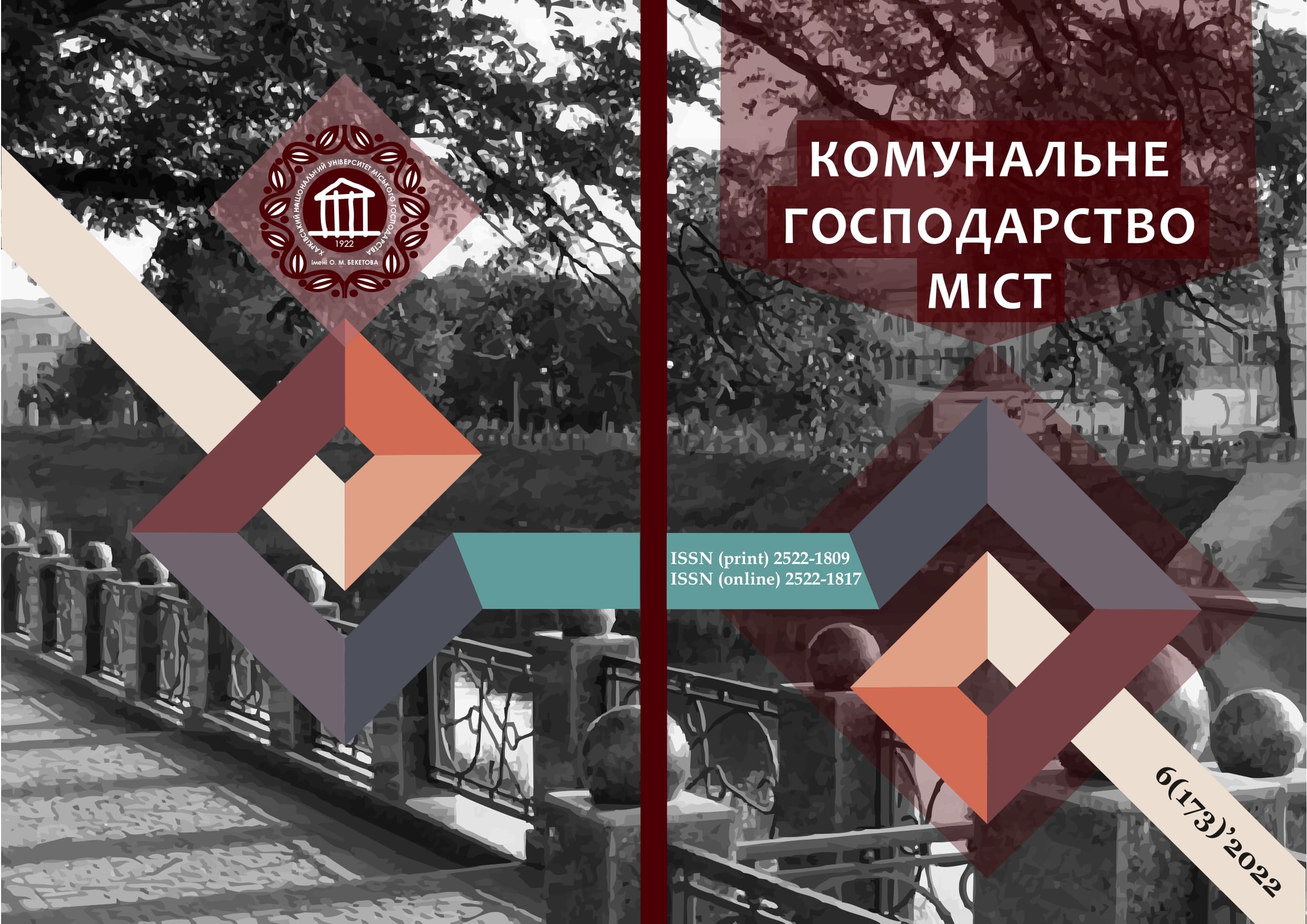THE STATE LAND CADASTRE IN THE V.I. VERNADSKY NOOSPHERIC CONCEPT
DOI:
https://doi.org/10.33042/2522-1809-2022-6-173-86-90Keywords:
state land cadastre, geoinformation system, geomatics, information management system, cadastral dataAbstract
Cadastral systems are most often a geo-information system that ensures the accumulation and storage of typical information, for example, the state land cadastre is a single state geo-information system of information about lands located within the state border of Ukraine, their purpose, restrictions on their use, as well as data on the quantitative and qualitative characteristics of lands, their assessment, on the distribution of lands between owners and users, on land reclamation networks and constituent parts of land reclamation networks But the use of standard cadastres does not allow solving a wide range of complex tasks related to information about land, real estate, water resources, etc., therefore, it conditions the development of conceptual provisions for the creation of an integrated intelligent cadastral system. Modern cadastres solve a narrow range of typical tasks, mainly providing the user with up-to-date information for solving private typical tasks. An attempt to integrate separate cadastral systems and the development of special programs that support decision-making by users (stakeholders) in various spheres of human activity will lead to a synergistic effect and the creation of collective artificial intelligence. This work formulates the problem of creating an information management system based on the methods of geomatics, as well as the methods and concepts of V. I. Vernadskyi's teaching. In our opinion, the weakening of the contradictions of the formulated problem lies in the way of creating a theoretical and methodological base, which should take into account the features of spatially distributed information modelling, as well as the creation of knowledge models in the field of geodesy and land management. The authors of this article are convinced that a new methodological paradigm of V. I. Vernadskyi's teaching is currently being formed. This belief is based on the great possibilities of modern information technologies, the development of modern geodetic instrumentation, as well as the results of modelling objects that require both high-precision measurements and soft calculations and linguistic assessments. The land cadastral information and management system should include executive and management subsystems and take into account the features of spatially distributed information modelling, as well as the creation of knowledge models in the field of geodesy and land management.
References
Passport of specialty 05.24.04 – land cadastre and monitoring. Retrieved from: https://zakon.rada.gov.ua/rada/ show/v08_1330-98#Text. [in Ukrainian]
Hubar, Yu., Khavar, Yu., Vash, Ya. (2021) Ways of development of national cadastral systems. Modern achievements of geodetic science and production. І(41). 151-163. [in Ukrainian]
Cemellini, В., Thompson, R., Vries, M., Oosterom, P. (2018) Visualization/dissemination of 3D Cadastral Information. Retrieved from: https://fig.net/resources/ proceedings/fig_proceedings/fig2018/ppt/ts05c/TS05C_cemellini_rod_et_al_9591_ppt.pdf.
Аien, A., Rajabifard, A., Kalantari, M., Wiliamson, I. (2011) Aspects of 3D Cadastre – A Case Study in Victoria. Retrieved from: http://www.gdmc.nl/3dcadastre/literature/ 3Dcad_2011_01.pdf.
Thompson, R., Oosterom, P., Soon, K. (2017) LandXML Encoding of Mixed 2D and 3D Survey Plans with Multi-Level Topology. Retrieved from: https://www.mdpi.com/2220-9964/6/6/171.
Stoter, J., Ploeger, H., Oosterom, P. (2013) 3D cadastre in the Netherlands: Developments and international applicability. Computers, Environment and Urban Systems. 40. 56-67.
Döner, F., Sirin, S. (2020) 3D Digital Representation of Cadastral Data in Turkey – Apartments Case. Land. 9(6). 179. https://doi.org/10.3390/land9060179.
Ying, S., Li, C., Chen, N., Jia, Y., Guo, R., Li, L. (2021) Object Analysis and 3D Spatial Modelling for Uniform Natural Resources in China. Land. 10(11). 1154. https://doi.org/10.3390/land10111154.
Bydłosz, J., Bieda, A. (2020) Developing a UML Model for the 3D Cadastre in Poland. Land. 9(11). 466. https://doi.org/10.3390/land9110466.
Shypulin, V.D. (2010) Basic principles of geographic information systems: teaching. manual. Kharkiv, KhNAMG. 313 p. [in Ukrainian]
Pomortseva, E.E. (2016) Designing geodatabases: textbook. Kharkov: KNUME. 140 p. [in Russian]
Vernadsky V.I. (1991) Scientific thought as a planetary phenomenon. M., Nauka, P. 10. [in Ukrainian]
Meteshkin, K.A., Levchenko, A.R. (2019) Parallels and meridians of geodesy and informatics or the basics of noogeomatics: teaching. manual. Kharkiv, KNUME. 203 p. [in Russian]
Kuhar, M.A. (2018) Models of computer support for decision-making of the system of land relations in Ukraine: thesis ... candidate technical sciences: 05.13.06 – information technologies. Kharkiv, KNUME.155 p. [in Ukrainian]
Zarytsky, O.V. (2021) The technology of building monitoring of regional resources based on the ranking of territory management information systems: autoref. thesis ... candidate technical sciences: 05.13.06 – information technologies. Kharkiv, KNUME. 24 p. [in Ukrainian]
Downloads
Published
How to Cite
Issue
Section
License
The authors who publish in this collection agree with the following terms:
• The authors reserve the right to authorship of their work and give the magazine the right to first publish this work under the terms of license CC BY-NC-ND 4.0 (with the Designation of Authorship - Non-Commercial - Without Derivatives 4.0 International), which allows others to freely distribute the published work with a mandatory reference to the authors of the original work and the first publication of the work in this magazine.
• Authors have the right to make independent extra-exclusive work agreements in the form in which they were published by this magazine (for example, posting work in an electronic repository of an institution or publishing as part of a monograph), provided that the link to the first publication of the work in this journal is maintained. .
• Journal policy allows and encourages the publication of manuscripts on the Internet (for example, in institutions' repositories or on personal websites), both before the publication of this manuscript and during its editorial work, as it contributes to the emergence of productive scientific discussion and positively affects the efficiency and dynamics of the citation of the published work (see The Effect of Open Access).

